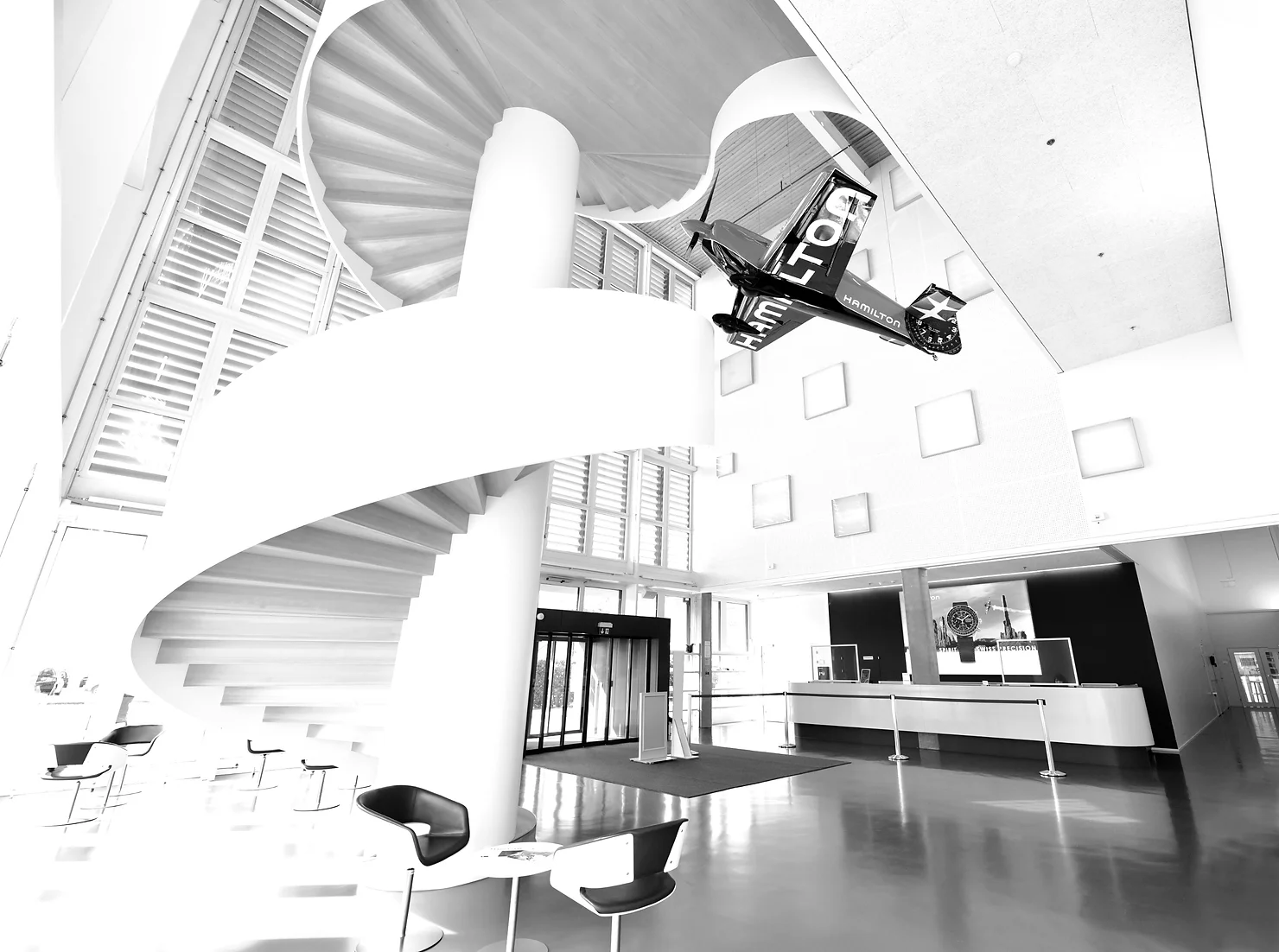
In Switzerland, Biel/Bienne is known for its diversity. A German and French bilingual town, within commute distance to Zurich, Geneva, Basel, Lausanne and Bern, it hosts people from all across the country. Walking down the streets, you soon realize it also hosts people from all around the world: the languages spoken, the ethnic origins, the traditional attire from various cultures… It’s quite wonderful, really, to see such a rich and harmonious mix at the foot of Swiss Jura hills.
For all those reasons, it feels quite natural that the most American among Swiss watch brands, the Hamilton Watch Company, ended up here in Bienne after over a century on the other side of the Atlantic. Earlier this week, on Wednesday, December 14, Hamilton celebrated its 130th anniversary. Today, we look back at the company’s journey, from Lancaster, Pennsylvania, to Bienne.
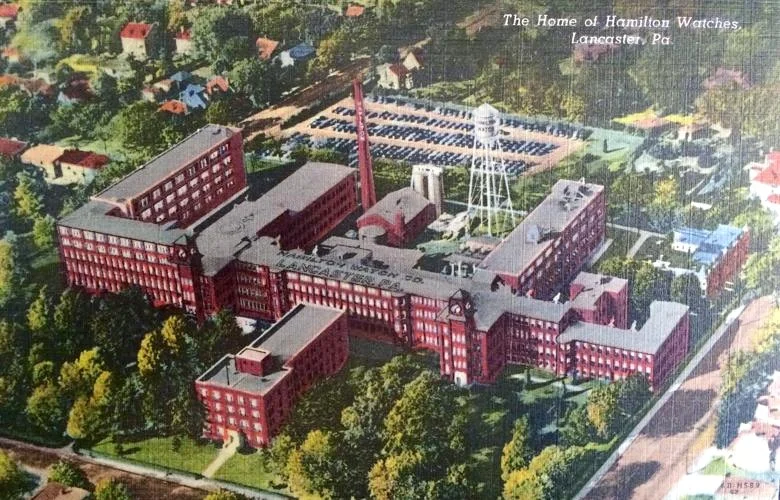
What is perhaps most remarkable about Hamilton’s history is how closely it’s tied to the history of the United States, over a period when the country became the world’s leading nation on many counts. As we will see below, Hamilton was the unofficial (and sometimes official) timekeeper across 3 pillars of American expansion: territorial coverage, military supremacy and aspirational culture.
So let’s go back to Wednesday December 14, 1892. On that day, the Hamilton Watch Company was created, as the merger of two previously struggling watch companies, Lancaster’s Keystone Standard and Illinois-based Aurora Watch. The name Hamilton was chosen as a tribute to James Hamilton, the original owner of the land on which the city of Lancaster was established.
Hamilton & the pillars of American expansion
As the United States matured into an industrially advanced nation, one of the key challenges it faced was the vast geographical spread of its territory. While in many ways an advantage, the overwhelming size of the land meant that interconnections were critical to national cohesion and economic development.
The railroad was at the center of this expansion of course and, as you can imagine, timing was of the essence. Accurate timekeeping was required not just to keep trains on schedule but also to prevent accidents. A standard was developed around railroad pocket watch requirements, and several companies such as Waltham and Elgin started producing them. Hamilton shortly followed.
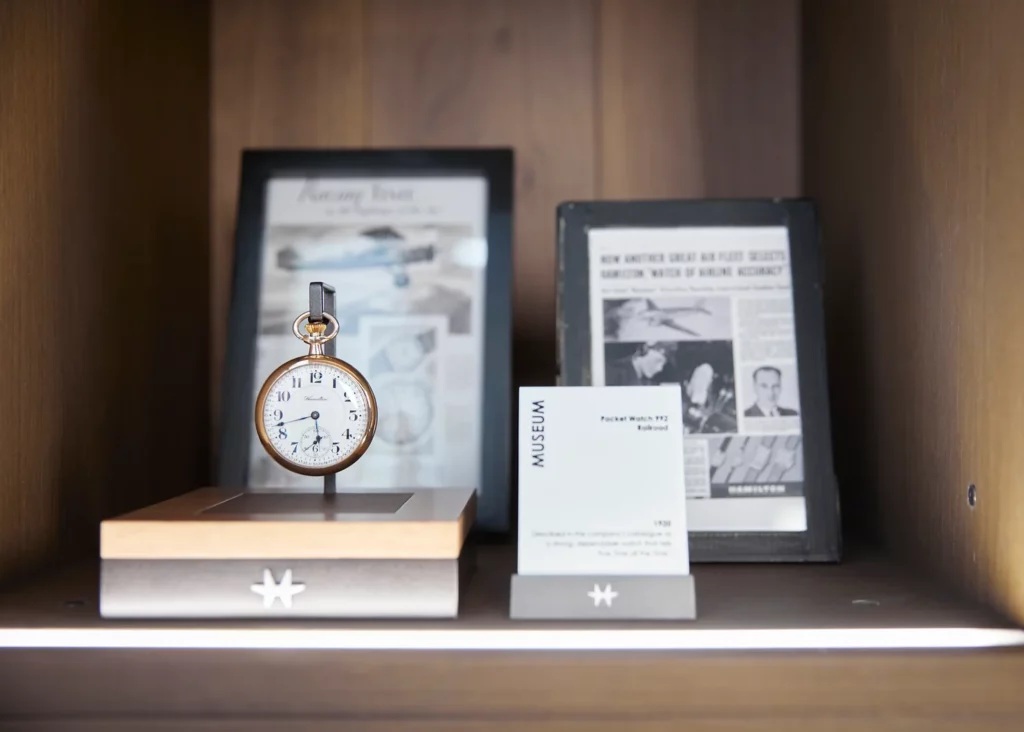
Hamilton watches rapidly grew a reputation for their quality and reliability. The brand also marketed its products in a very efficient manner, running campaigns in early railroad magazines. Its timepieces, in particular reference 992, quickly became the watch of choice for railroad professionals and users. It is believed that approximately 600,000 units of the model were produced between 1902 and 1940.
Outside its borders, the United States became a global superpower in large part thanks to its military, in particular during World War II. Due to the extensive need for US Army issued watches, Hamilton stopped producing watches for the general public in 1942. It focused entirely on military needs, in particular wristwatches and marine chronometers. In total, over one million timepieces were produced during the period.
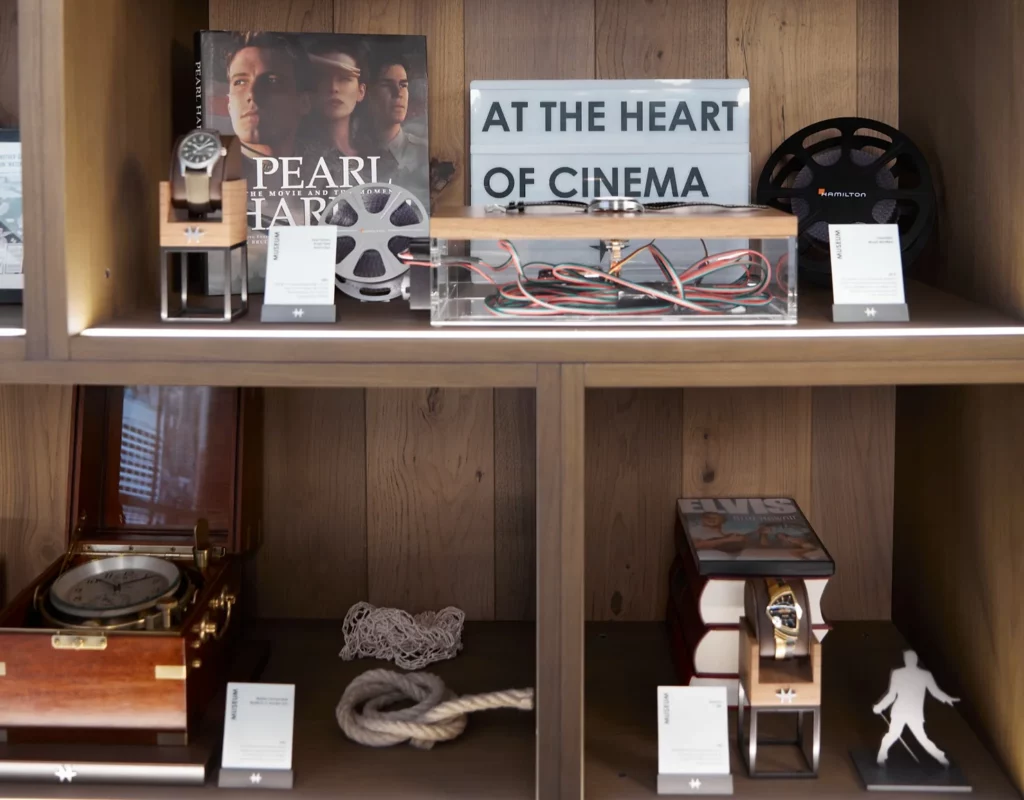
American expansion in the 20th century also relied on soft power, in particular American culture, showcasing a way of life that seduced a large part of the world. Its main vehicle for this was Hollywood, of course. With over 500 movies featuring its watches, Hamilton imposed itself as the watchmaker for American motion pictures.
The first was Shanghai Express, with Marlene Dietrich, in 1932. The most famous today, perhaps, where the watch itself played a critical role, is Christopher Nolan’s Interstallar, in 2014. Another famous example, tying back to the military history, is Pearl Harbor, released in 2001. Finally, Hamilton was also the favorite watch brand of perhaps the most iconic ambassador of American culture in the past century, Elvis Presley. He not only wore his Ventura in the musical comedy Blue Hawaii but also, most notably, off screen.
From America to Switzerland
Seeing how close Hamilton was to many pillars of American success, you may wonder: how then did it end up becoming a Swiss company? In many ways, the transition was a gradual one. As the current CEO, Vivian Stauffer, explained in an interview for Made in Bienne earlier this year, the foothold began when the brand acquired the component manufacturer Huguenin, in 1959. This in turn was followed, 7 years later, by the acquisition of the Buren Watch Company. As some of you may know, Buren is a small (and very pretty) town, a 15 minute drive from Bienne.
By that time, while the HQ remained in Lancaster, production had moved to Switzerland. In 1974, the Omega and Tissot holding company, SSIH, purchased Hamilton. SSIH and ASUAG conglomerates merged in 1983 to form what would become the Swatch Group, of which Hamilton is still part today.

Despite belonging to a Swiss company, Hamilton remained an American company for a while. The brand’s offices were first moved to New Jersey in 1993, where it stayed for 10 years. Finally, in 2003, the HQ moved to Switzerland. The company was first based in Lengnau, near Bienne, located with Rado, another Swatch Group brand. It finally moved to Bienne in 2006. After several locations in the city, it is now established in a beautiful wooden building in Langgasse, where Swatch was based before the recent Shigeru Ban construction.
It’s been quite a journey, but as mentioned above, I can’t think of a better place than Bienne to host a company that made watchmaking history on the other side of the world. Walking around the brand’s HQ today, you can hear more than 10 different languages spoken among the employees. The walls show images of Elvis and Matthew McConaughey, drawers hide railroad pocket watches and military issued timepieces from the archives, the windows give onto the Jura hills… From Lancaster to Bienne.
Photos credit of Hamilton Watch Company from when I interviewed Vivian Stauffer (apart from the postcard of the original Landcaster site)


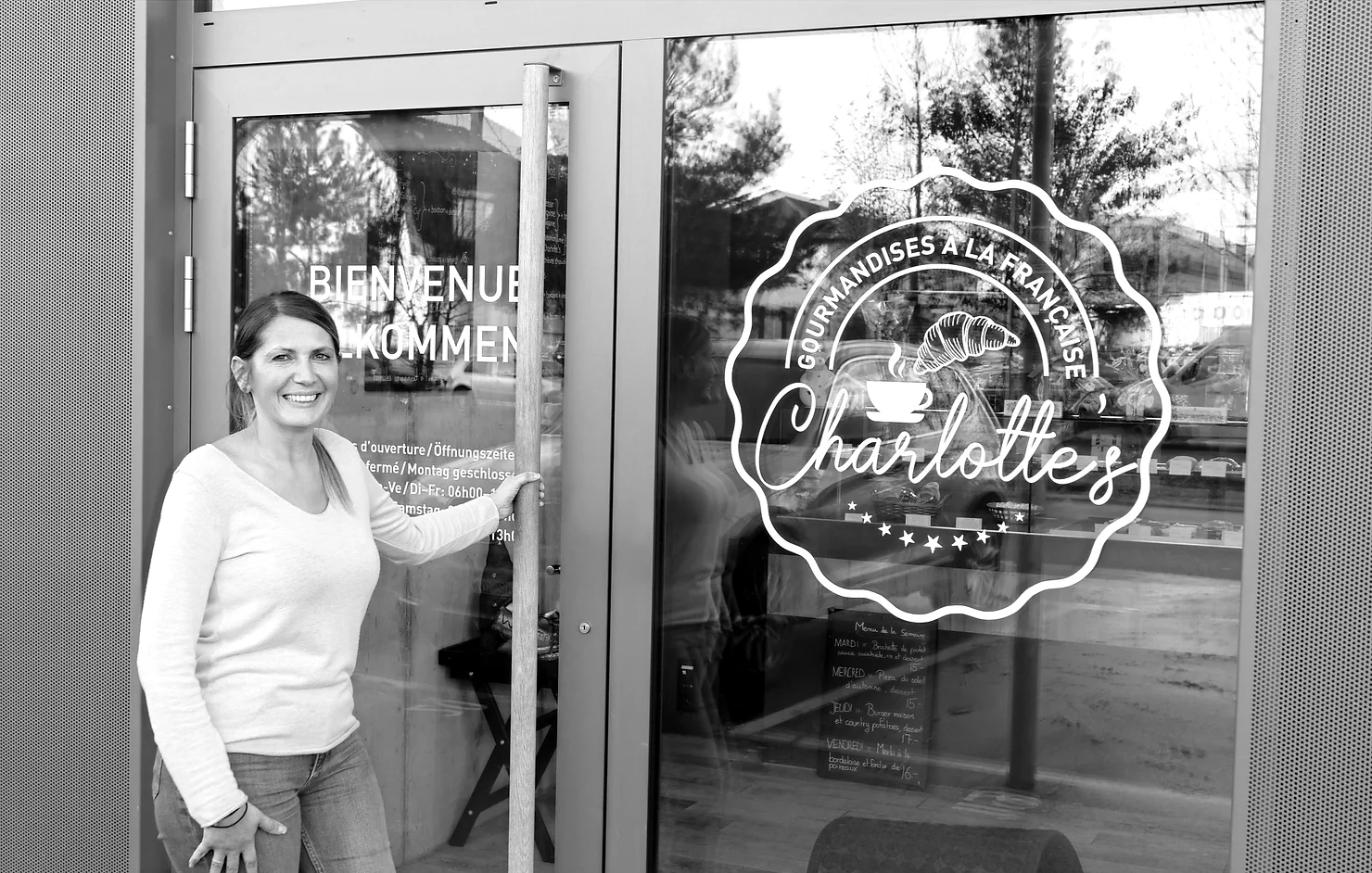
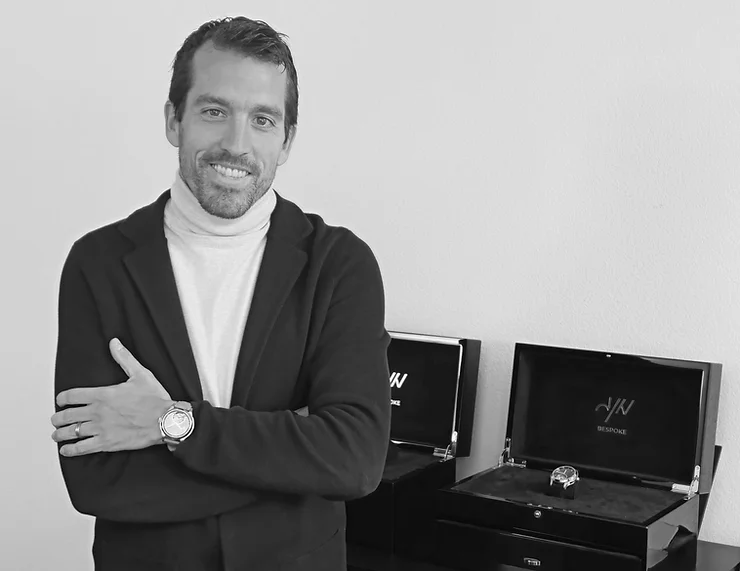
Congrats for the Hamilton’s 130th aniversary. I know they have a great history in the US but I guess many people may not know why and how they move to the Switzerland. This is very interesting, and Hamilton is sitll being the American watch brand in Bienne. Thank you!